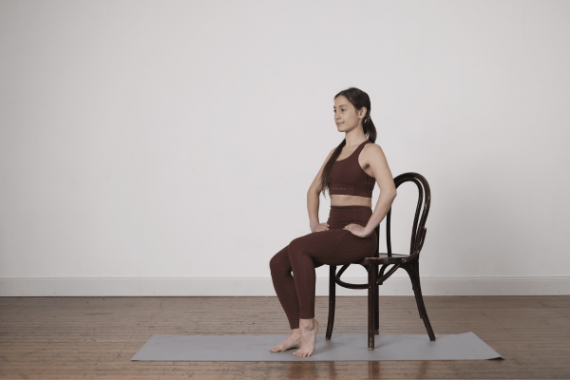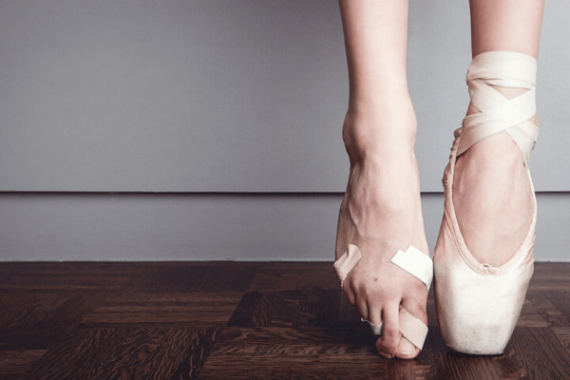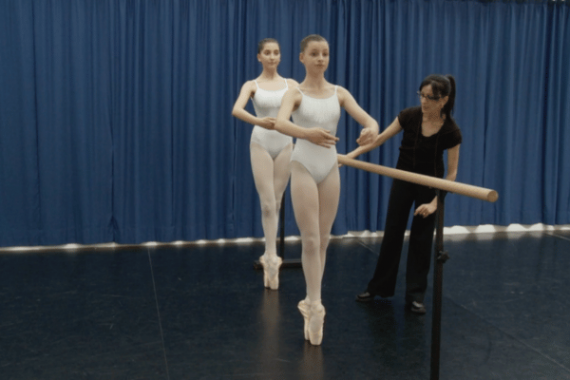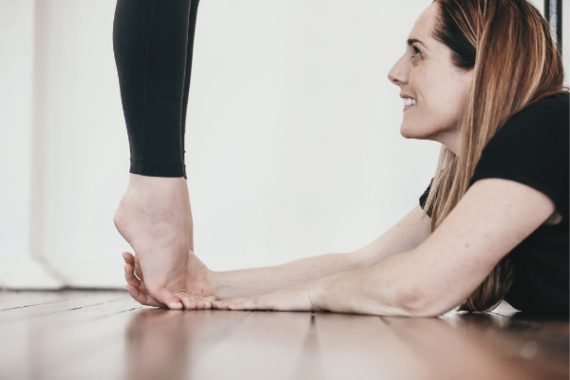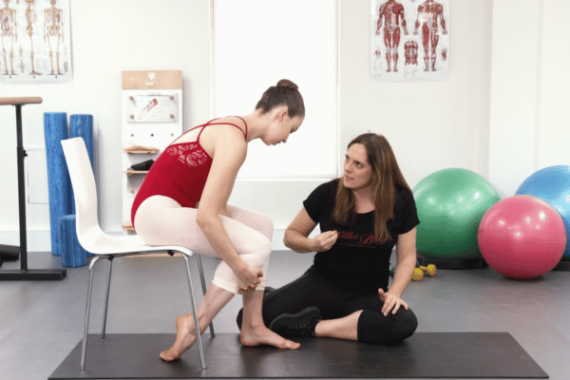Flat Feet and Pointe Shoes
As a Dance Educator and Dance Physiotherapist, one of the most common queries I get is… “I have ‘flat feet’. Is pointe work a no-no?”.
The answer to this can be yes, or no. It really is a “that all depends” scenario. This is due to the fact that there are basically two types of ‘flat feet’.
Some dancers (and people in general) do have anatomically ‘flat feet’. This is usually genetically based, and often there are visible racial trends. Some girls will tend to have a flatter curve to their arch in standing due to the actual shape of the bones in their foot, and no matter how strong the small foot muscles get, the shape of the foot will not change significantly. If this is the case, pointe work is still possible, assuming all the other requirements for pointe are achieved. The foot will perhaps not have the optimal appearance en pointe that many companies desire, however, the dancer will be reasonably safe en pointe. In this situation, the ligaments should be stiff enough to help stabilise the foot, and the dancer must have good control of the small muscles of the foot.
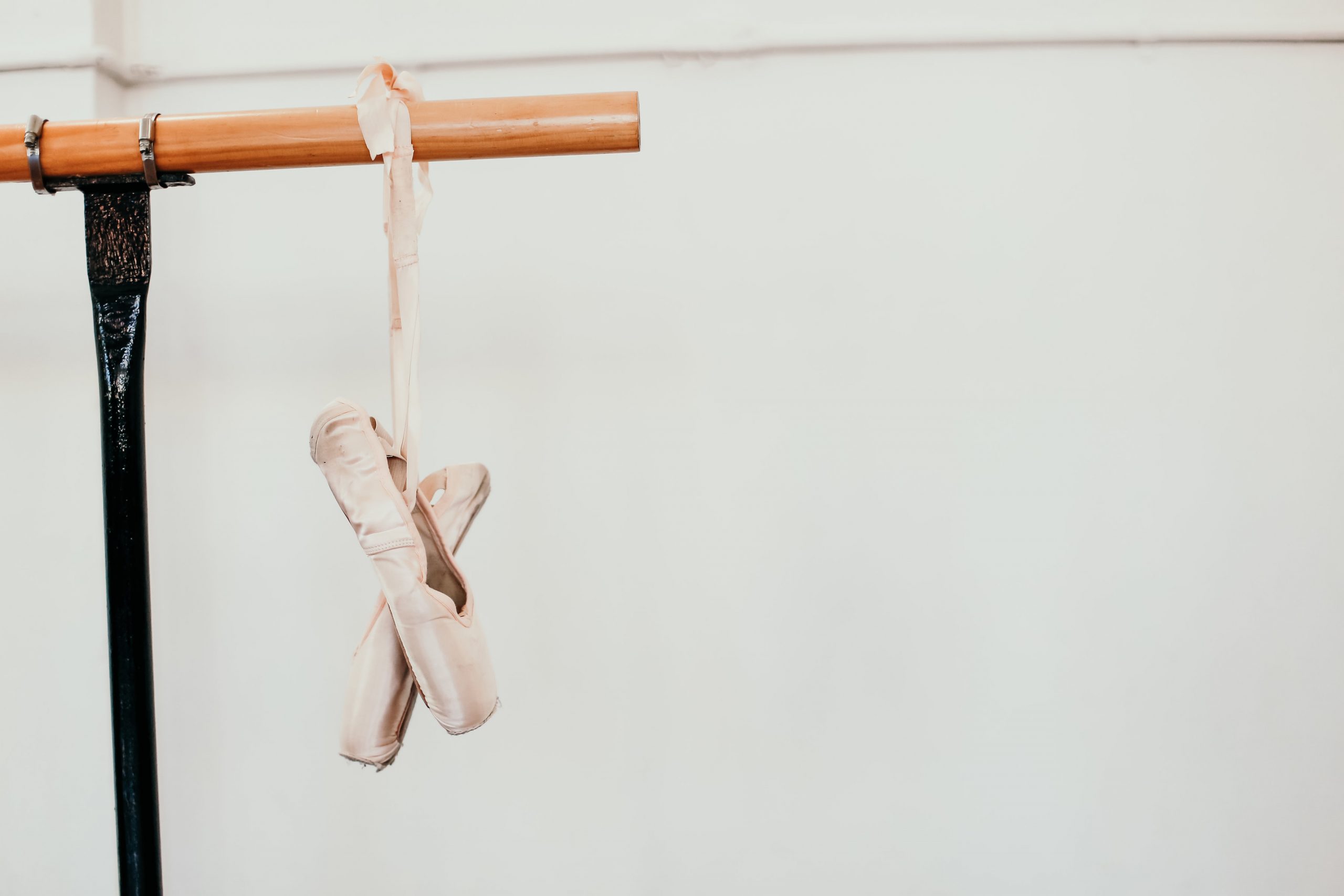
Other girls will have the appearance of a ‘flat foot’ due to the presence of very mobile ligaments and poor muscular support. This kind of mobile foot can be developed to look great en pointe when very strong, however, a girl should not be allowed to progress onto pointe while the foot is so weak. This foot often looks reasonable (or even very good) in a demi-pointe position, however the arch control drops as the dancer drops her heel. Specific strengthening of the arch and isolated control of the muscles supporting and controlling the toes is essential before commencing pointe work.
These dancers usually have increased mobility in many other joints in their body, and may have problems in their knees or back due to increased movement and decreased stability in these joints.
In addition, some girls have a very high arch to their foot, yet are very weak in the small muscles of the feet. While it may appear that they have good control of the arch, as it does not roll in en fondu, it must be ensured that the foot is actually strong enough.
Many girls have such stiff ligaments in their feet that their arch is rigidly held in place, without any muscular support. There is little movement between the bones en fondu, and because of this they can be prone to foot, ankle, and knee injuries, due to the lack of shock absorption in allegro and pointe work. This dancer must work on the mobility and strength of the foot prior to attempting pointe work.
To assess the true nature of any ‘flat foot’ takes skill and practice, and is ideally done by a trained medical professional.
Instead of simply looking at the shape of the arch, it is important to take a look at the position of the heel bone (Calcaneus) and the relative position of the next bone in the foot (the Talus). The Achilles Tendon should fall in a relatively straight line when viewed from behind but may appear to have a significant curve at the level of the ankle if the heel and the arch are rolling in.
The dancer must be able to maintain a good position of the Talus when standing in parallel and in turnout, en fondu, and with petit allegro to demonstrated adequate control of any shaped foot.
It is essential that each dancer learn the strengthening exercises relative to his or her type of foot, and be aware of the implications of their body type before progressing onto pointe.
This is often difficult for dance teachers to do this with each child individually, so if there is access to a Physiotherapist/Physical Therapist or Sports Doctor who is familiar in dealing with dancers, an assessment is advisable before commencing pointe work.
I have also made a video explaining these points which are posted on The Perfect Pointe Book website. I hope this helps anyone who is wondering whether their feet are suitable for pointe, and look forward to helping you work with yours, to make the best of them you can!
Pointe Resources
If you are looking to delve deeper into this topic, check out the following programs:
- The Perfect Pointe Book: This course was originally designed to help students and dance teachers safely prepare for pointe work. The four stages of tests and exercises within the book are ideal for pre-pointe preparation classes, students close to achieving pointe shoes and students already en pointe looking for extra strength and technique training.
- Pointe Range: This online program comprises of 41 clear and concise videos, totalling just under 2 hours play time, this course begins with a series of assessments to establish exactly what structures are restricting your pointe range. It then explores a diverse array of massage techniques, joint mobility exercises and fascial mobilisers to safely improve your pointe range. This is followed by an in depth look at retraining all of the muscles that stabilise the foot and ankle to allow you to actually use your new found pointe range in class.
- Pointe Intensive: This online virtual workshop is designed for both Dance Teachers & Health Professionals working with dancers. This three day Intensive will give you the most up-to-date advice in the industry to help you understand your students’ needs, analyze their differences, and them you the tools to help your students become the best dancer they can be.



